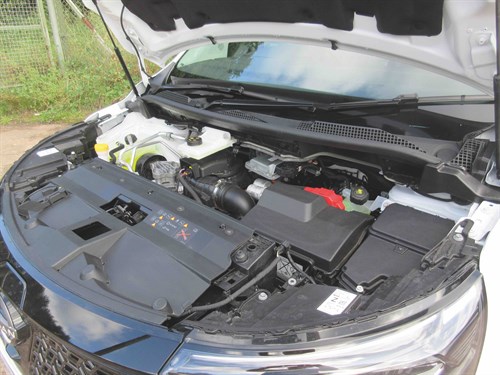- Further 4.25t electric van rule changes under consideration
- Arval research uncovers van fleet optimism
- Pre-orders open for new Nissan Interstar
- More than half of UK van drivers now believe EVs more cost effective than ICE, VW finds
- Public EV charging costs preventing adoption for some fleets, AFP says
- Ford Ranger Tremor review
- Inseego awarded Crown Commercial Service framework status
- ADVERTISEMENT FEATURE: Electrify and optimise: Digital solutions at the forefront of decarbonisation
- Fleets being pushed to take electric vans due to ZEV mandate, AFP reports
- Buying a used... Citroen Relay (2019)
The What Van? Road Test: Nissan Townstar EV (2022)
Date: Monday, November 27, 2023

Powertrain
Generating up to 245Nm of torque, and married to a single-speed automatic transmission, the electric motor draws power from a 45kWh lithium-ion battery. The battery charging point is at the front of the vehicle, beneath the Nissan logo.
Driving
No matter whether you are laden or unladen, the Townstar EV rides surprisingly well, possibly because the weight of the battery pack prevents it from bouncing around too much. It handles well too, although there were times when we felt the steering could stand to be tightened a little to deliver better response and more feedback as we launched ourselves into bends.
Performance is not an issue.
Even if you press a button on the dashboard to switch to the Eco setting in a bid to preserve the vehicle’s range between recharges, you will find acceleration and the van’s ability to cruise at speed along motorways and dual-carriageways will not suffer unduly. We used the Eco setting with a 300kg test load onboard and took the Townstar EV up and down the hills of Herefordshire and Gloucestershire, and did not feel we were being held back.
The absence of decibels from an internal combustion engine does however mean that all the other sources of noise are highlighted. Wind and tyre noise are undoubtedly noticeable.
Something you can certainly hear at low speeds from inside the vehicle is the white noise the van generates to alert pedestrians and other vulnerable road users to its presence.
Tap the transmission lever to the right and you can select from three different levels of regeneration - B1, B2, or B3, the most aggressive - which recapture energy that would otherwise be wasted, and pump it into the battery.
Driving the Townstar EV predominantly in a rural area we found B1 the most useful, even though it is the mildest. It recoups energy when you descend a hill and take your foot off the accelerator, but without slowing you down unduly.
That said, we can certainly appreciate the benefits likely to be delivered by B2 and B3 in an urban setting.
While Nissan quotes a WLTP (Worldwide Harmonised Light Vehicle Test Procedure) combined range of 176 miles for the Tekna+ between recharges assuming the battery is fully-charged to begin with, cold weather can reduce the projected range significantly; a concern with every electric van we have encountered. A sudden fall in temperature cut our van’s projected range to 137 miles, even though the battery was charged to the maximum.
On the positive side the Tekna+ can be charged up quickly, with a battery that can get from 15% to 80% in an hour-and-a-half says Nissan. Plug it into a fast charger and it should be able to reach 80% of its charging capacity from 15% to begin with in no more than 37 minutes, Nissan contends.
Those figures apply if you are using public charging points. Plug your van into a 7.3kW domestic wall-box and you should be able to go from 0% to 100% in seven hours.
If range is a vital consideration then it is perhaps worth noting that the manufacturer quotes a combined range of 182 miles for the less-well-equipped Visia variant.
View The WhatVan Digital Edition


